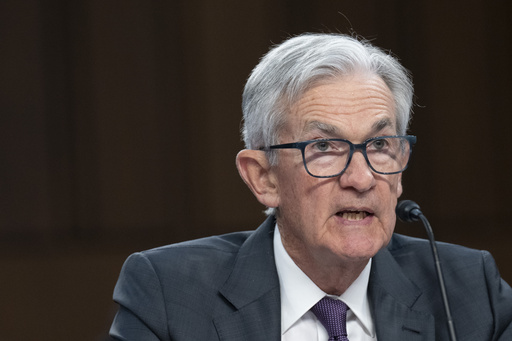
WASHINGTON — Federal Reserve Chair Jerome Powell reassured Americans on Tuesday that their bank accounts remain secure, despite the recent decision by the Trump administration to halt operations at the Consumer Financial Protection Bureau (CFPB). In his testimony before the Senate Banking Committee, Powell emphasized that “bank accounts overall across the economy are safe” and affirmed the protective role of government deposit insurance. His remarks came amid a backdrop of partisan debates concerning the administration’s directive over the weekend to suspend the CFPB’s supervisory and regulatory efforts.
Senator Elizabeth Warren, a Massachusetts Democrat and advocate for the CFPB’s establishment in response to the 2008 financial crisis, expressed her concerns, stating, “I’d be really worried about doing business with a giant bank when there’s no cop on the beat.” In contrast, Powell faced minimal scrutiny from senators regarding the Federal Reserve’s interest-rate strategy, which has resulted in increased borrowing costs, although it has also played a part in lowering inflation rates.
While attending to the rising inflation rates following the pandemic, senators had limited questions for Powell about the Fed’s timeline for returning inflation, currently at 2.6%, to its targeted 2% mark. Republican Senator John Kennedy from Louisiana commended Powell and the Fed for successfully reducing inflation from a high of 7.2% in June 2022, noting that many economists had predicted that the Fed’s aggressive rate hikes would lead to a recession, yet the economy has continued to show growth. “The fact is, knock on wood, we have experienced a soft landing,” Kennedy remarked, attributing this to the Fed officials’ efforts.
Powell, when asked about the potential implications of additional tariffs proposed by President Trump on inflation and the Fed’s key interest rate—currently approximately 4.3%, down from a two-decade high of 5.3% last year—opted to refrain from commenting. He reiterated his stance that with the economy in a generally healthy state, the Fed is in no rush to adjust its policy and will wait to see how developments unfold in relation to tariffs and their effects on economic growth and inflation before implementing further rate cuts. The Fed last revised its key rate three times last year but maintained its current level the previous month.
Engulfed in the partisan discord surrounding Trump’s executive orders and the initiatives led by billionaire Elon Musk aiming to streamline government programs, Powell found himself navigating challenging waters. Warren, who frequently referred to Musk as “co-president,” urged Powell to continue the Fed’s support for the CFPB, which receives financial backing from the Fed. “Do not make the Federal Reserve an accomplice to this illegal act, and forever sully the reputation of the Fed,” she cautioned.
However, Republican senators downplayed the consequences of dismantling the CFPB. The bureau, founded to regulate financial practices, has implemented policies to limit overdraft fees and eliminate junk fees, returning approximately $20 billion to consumers since its establishment. Senator Pete Ricketts from Nebraska argued that state agencies can still offer consumer protections, insisting, “To say that nobody is out there looking after consumers is inaccurate and we ought not to try and scare consumers right now.”
Additionally, Powell announced that the central bank had commenced a second review of its policy strategies and communication methods. He clarified that this review would not assess whether to amend the 2% inflation target, which some economists believe is excessively low. Powell has consistently maintained that the Fed should refrain from altering the target while it yet struggles to reduce inflation to that level. Following a policy review in 2019, the Fed adopted a strategy to seek inflation averaging 2% over time. Some economists have criticized this approach for causing a sluggish response to the inflation surge seen in 2021 and 2022, as the Fed did not initiate any interest rate hikes until March 2022.
Last week, insights from several Fed officials, along with a decrease in the unemployment rate, indicated that the prospect of a rate cut in the near future is fading. A lack of cuts could prolong periods of high mortgage rates and elevated borrowing costs for various consumer loans. Still, mortgage rates are closely related to the yield of the 10-year Treasury note, which can fluctuate independently of the Fed’s actions. Fed governor Adriana Kugler stated last Friday that the labor market appears “stable,” providing the Fed with adequate time to deliberate its decisions. “The cautious and the prudent step is to hold the (Fed’s key) rate where it is for some time,” Kugler stated.
The government reported last Friday that employers added a significant number of jobs in the previous month, while the unemployment rate decreased for the second consecutive month to 4%, a level historically considered low. The positive jobs report has led economists at Bank of America to express increased confidence that the Fed’s cycle of rate cuts may be ending.

